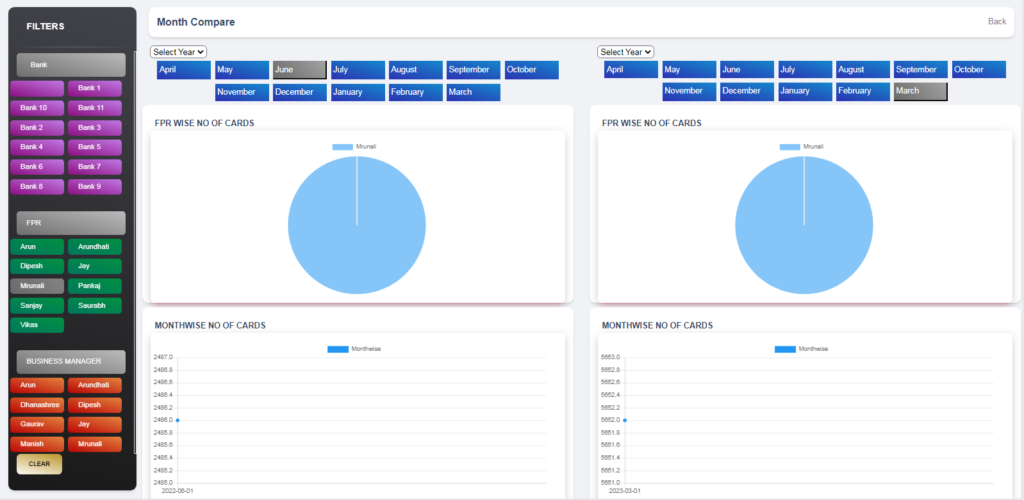Data Analytics Dashboard
In the fast-paced realm of business leadership, maintaining a competitive edge demands strategic insight.
Unlock the power of data-driven, agile decision-making!

In the fast-paced realm of business leadership, maintaining a competitive edge demands strategic insight.
Unlock the power of data-driven, agile decision-making!

Utilize key performance indicators (KPIs) like sales growth rate, conversion rate, average deal size, and sales velocity to assess your sales team's effectiveness.
Get a visual overview of your sales pipeline, highlighting the number of leads, opportunities, and deals at each stage, along with conversion rates and expected revenue.
Showcase current sales revenue figures, segmented by daily, weekly, monthly, quarterly, and yearly periods, and compare them to previous periods to identify trends.

Highlight the topperforming salespeople,
teams, or regions based
on revenue generated,
deals closed, or other
relevant metrics.
Analyze metrics such as customer acquisition cost (CAC), customer lifetime value (CLV), and churn rate to evaluate the effectiveness of your customer acquisition and retention strategies.
Examine the stages of the sales funnel (e.g., leads, prospects, opportunities) along with conversion rates and the average time taken to close deals.
Visualize sales data on a geographical map to pinpoint high-performing regions and identify potential opportunities for expansion.
Assess the precision of sales forecasts by comparing predicted sales figures with actual results.
Evaluate the performance of various sales channels (e.g., direct sales, online sales, resellers) in terms of revenue generation and profitability.
Monitor the sales performance of different products or services, identifying best-sellers and slow-movers.
Evaluate the productivity and effectiveness of the sales team by tracking metrics such as call volume, number of meetings, and quota attainment.
Gather demographic and behavioral data on customers to help identify target audiences and enhance marketing strategies.
Track progress toward achieving sales goals and targets, encompassing both short-term and long-term objectives.

Incorporate customer feedback and sentiment analysis from surveys and social media to gauge customer satisfaction and sentiment.
Analyze historical sales data to identify seasonality, cyclical patterns, and longterm growth trends
Segment sales data by product categories or SKU numbers to identify highperforming product lines
Ensure that the dashboard is accessible on mobile devices to allow CEOs to monitor sales performance while on the go.
Set up alerts for significant sales milestones, deviations from targets, or other critical events.
Allow users to drill down into specific sales data for more detailed analysis when necessary.





The T3 Analytical Dashboard is a vital component of CRM systems, delivering executives a holistic view of key metrics and insights. With functionalities ranging from CEO login to executive project dashboards and owner dashboards, it encompasses diverse features tailored for strategic oversight. Whether through the executive financial dashboard or a Power BI executive dashboard, the T3 Analytical Dashboard enhances data visualization for informed decision-making.
Best practices in executive dashboard design are essential for maximizing effectiveness, ensuring clarity and usability. With tools like an analytical dashboard template and executive summary dashboard examples, the T3 Analytical Dashboard meets various needs, including CEO email database integration and an executive marketing dashboard. Ultimately, it serves as a centralized hub for critical information, acting as a window into the organization’s pulse and providing insights into performance and trends.
Schedule Personalized FREE Demo For You Today!